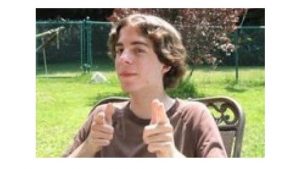
Nancy Lanza, the shooters mother and first victim, held the sort of apocalyptic fantasies that have fueled the imagination of our cinema and many survivalists. She collected guns, bragged of them, took her two boys to the shooting range, but according to her sister in law, she took “meticulous care” not to leave them accessible.
She herself was not at all accessible. Her gambling friends had never even seen the inside of her house – few of her friends had – and this may relate to her recourse for apocalyptic fantasies of an economic meltdown and the breakdown of civilized society.
“She told me she liked the single-mindedness of shooting,” said Dan Holmes, her gardener.
Adam meanwhile, is remembered as having been painfully shy in highschool, avoiding getting his picture taken for senior picture and having few friends and little to say. By the time he was 20, he had perhaps no friends whatsoever and spent an obsessive amount of time on the internet and playing violent video games, though he meanwhile lacked a Facebook or Twitter account or anything amounting to a social outlet.
Adam had aspergers, a milder form of autism, but this was not a cause of his violence. The mental condition in fact is common, is the fashionable mental illness of our age, the way hysteria was in fashion in Freud’s time, and Schizophrenia after the World Wars.
The difficulty in raising Adam seems to have been a factor in his parent’s divorce. With the internet as his main outlet to the world, with a mother who feared the apocalypse, with divorced parents, and an older brother he hadn’t seen since 2010, Lanza suffered the sense of alienation that has been with us since the rise of modernism.
“Are we prepared to say that such violence visited upon our children year after year after year is somehow the price of our children?” asked Obama rhetorically, although the answer isn’t as obvious as he suggests. Gun control is extrinsic an outside approach, the mentality of our alienated youth is the intrinsic problem of which mass-shootings are the symptom. While gun control may be in order, the ultimate healing of this psychic wound will come from elsewhere.














































